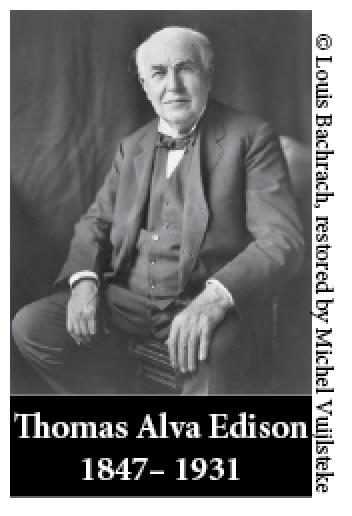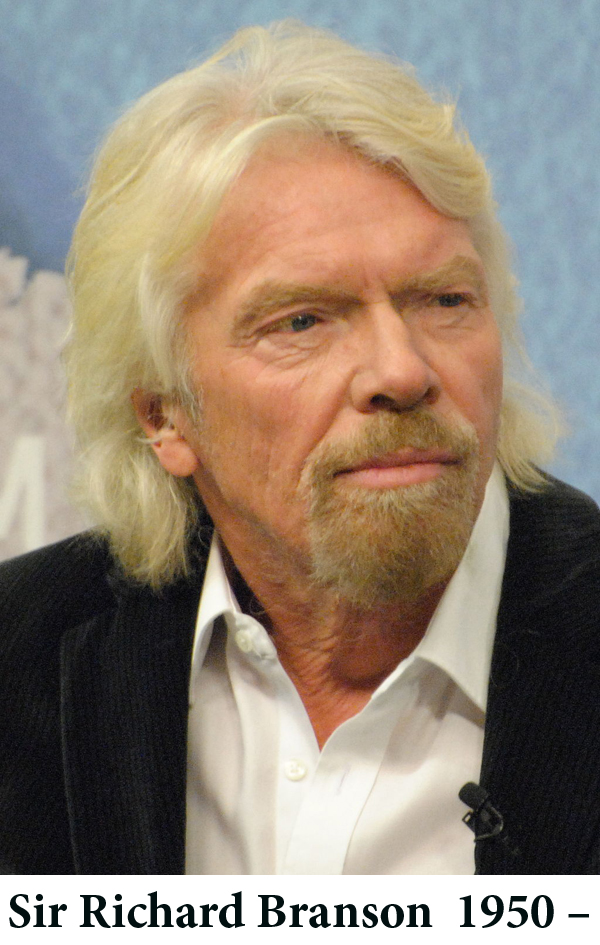Most people who think they are worth nothing will not achieve at a high level because self-efficacy is a vital component of success. As Henry Ford once observed, “Whether you think you can, or think you can’t–you’re right.” Those who believe they cannot achieve are already defeated before they begin.
However, there have been many people who were told they were worth little or nothing who believed in themselves and made history. Two examples are provided below.
Thomas Edison (excerpted from the book, Intelligence, IQ & Perception)

When Thomas was 7 years old, the family moved to Port Huron, Michigan. By this time he had been in and out of several different schools in Ohio and Michigan on account of a reading disability that we know today as dyslexia. A few months into his first-grade school year, his teacher Reverend G. B. Engle, became frustrated by Edison’s learning difficulties and called him “addled.” The scorned youngster stormed out of school ending his formal education. Fortunately his mother was a teacher, so Thomas was home-schooled thereafter.
Under his mother’s tutelage, Edison became an avid reader, pursuing his natural curiosity through books and chemical experiments. By age 13, he was earning $50 per week selling candy, fruit, and newspapers on the Grand Trunk Railroad run from Port Huron to Detroit. His flair for entrepreneurial enterprise was further evident at age 15 when he wrote and printed, on a small printing press located in a baggage car, The Grand Trunk Herald–a newspaper that he sold to the 400 railroad employees. Using money earned from his enterprise, he purchased books on chemistry along with chemicals for experiments that he conducted in his own makeshift baggage car “lab.” Years later Edison said that both he and his laboratory were tossed off the train at Smiths Creek, Michigan by an angry train conductor when a chemical experiment went horribly wrong and burst into flame. In 1866, Edison secured a job as telegraph operator at Western Union where he managed the news wire for the Associated Press bureau. He chose to work the night shift, so he would be free to conduct his experiments outside the scrutiny of supervisors. However, he was fired from that job when a lead-acid battery he was exploring leaked sulphuric acid through the floorboards of his second-story lab onto his boss’s desk.
Unrelenting in his exploration of chemistry and electricity, he filed in 1869, at the age of 22, his first patent–an electric vote recorder. A few months later, he moved to Elizabeth, New Jersey, living in the basement of an associate, Franklin Pope, with whom he partnered to found Pope, Edison & Company Electrical Engineers. The next year, the ambitious entrepreneurs invented the one-wire telegraph, that tracked and printed stock prices and is known today as the stock ticker.
By the time he had reached the age of 29 in 1876, Edison had built a facility in Menlo Park, New Jersey, that would eventually become the first industrial research laboratory in the United States.
The rest is history. Thomas Edison brought us the phonograph and lit up our world with his development of the incandescent light bulb.
Richard Branson

Sir Richard Branson was born on July 18, 1950, in London, England. Although speech came to him at an early age, he was slow in acquiring written language, confessing in an interview with The Times, London, “At school I was dyslexic and a dunce.” His academic performance was poor and when he decided to leave school at age 16, the headmaster of Stowe School, Robert Drayson, presciently observed, “You will either end up in prison, or become a millionaire.” With his flamboyant personality and intensity of purpose, Branson flirted with both possibilities; he served an overnight stay in jail for tax evasion in 1971, but ultimately moved away from the former and toward the latter with increasing vigor.
Branson’s eagerness to confront risk has been evident throughout his storied life. In 1984, he was booked on a flight from Puerto Rico to the British Virgin Islands where he was to meet with his future wife Joan Templeman. When the flight was canceled, he and several hundred passengers were stranded in the small island airport. Perceiving an opportunity, he scouted by telephone for a charter flight and paid the total cost up front. He then canvassed the stranded passengers, offering them tickets to the British Virgin Islands for $39 each. This covered his costs and sowed the seeds for the creation of Virgin Atlantic Airlines a few months later.
Such was the risk-taking approach that characterized Branson’s many ventures, culminating in an empire of companies under the umbrella called the Virgin Group. His motto was, “You’ve got to take risks if you’re going to succeed. I would much rather ask forgiveness than permission.” This approach brought him fame and a net worth of $4.6B qualifying him as 589th wealthiest billionaire in the Forbes’ 2021 ranking of the richest people in the world.
On March 30, 2000, Richard Branson was knighted “for services to entrepreneurship” by Prince Charles and became Sir Richard Branson. As the model of a swashbuckling entrepreneur with an insatiable appetite for risk and an insistence on marching to his own tune, he has been an inspiration to many who have not excelled in academics, but do wish to succeed in business. Branson once observed, “Education doesn’t just take place in stuffy classrooms and university buildings, it can happen everywhere, every day to every person.”
Between June 27 and June 30 of this year, the first commercial space flight, called “Galactic 01”, will be launched by Virgin Galactic, the company founded by someone deemed to be a “dunce” is making history.
The moral of this story is that the most of the limitations we face in life are self-imposed.
